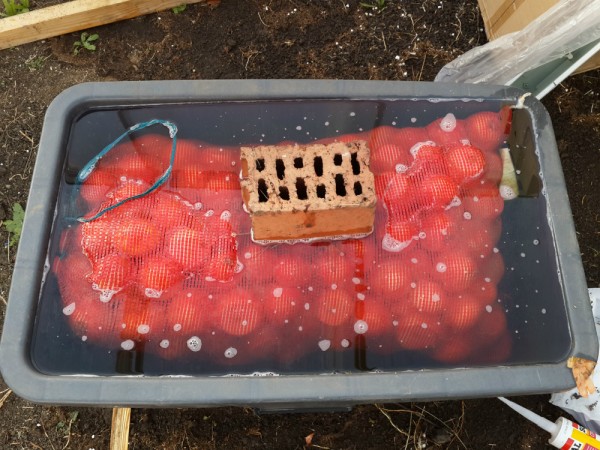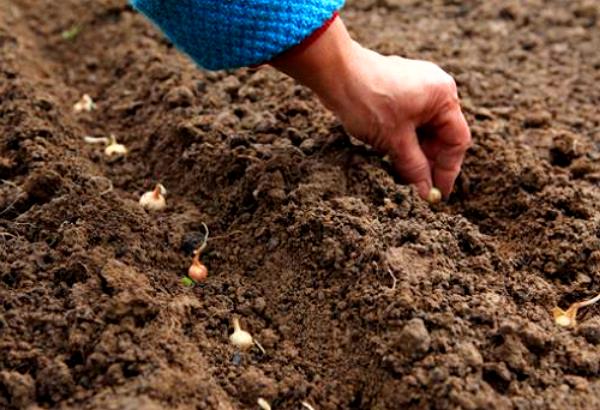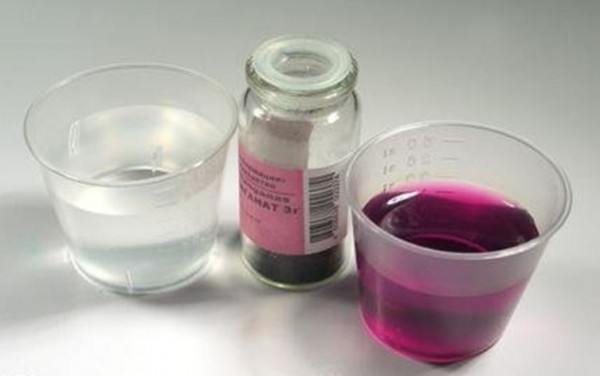How and how to process onion sets before planting: useful tips
Content
How to process heads
For planting, small bulbs with a diameter of no more than 1-3 cm, which were grown from seeds, are used. You can buy sevok in a specialized store or grow it yourself. Preparing a seed plant before planting requires a few simple processes. First, all the bulbs must be sorted out, healthy and diseased bulbs must be sorted out. Bulbs that are slightly flaky, rotten or have black mold, or dried out bulbs are not suitable for sowing. Further, the selected bulbs must be warmed up a couple of days before the date of planting in the ground. To do this, just thaw a sheet of paper or newspaper near a radiator or oven, and spread the seed in one layer.

Temperatures of 35-40 degrees Celsius will be sufficient for warming up. If you missed this moment, then on the day before planting, you can carry out an emergency "awakening": pour the sevok with hot, but not boiling water for a couple of minutes, and then lower it into cold water for one minute. Such processing is necessary so that the planted onion sets do not "go" into the arrows. The warmed-up seed requires preliminary soaking in a nutrient substance. Any complex fertilizer can be used to feed the bulbs. After placing the bulbs in a net or bag, leave them for 10 hours in a nutrient solution or in a solution of ammophoska, nitroammophoska (1 tablespoon of the composition is used for 10 liters of liquid).
After, the next "bath": without rinsing, immerse the grid with onion heads for 10 minutes in a solution of copper sulfate. The composition is prepared based on the following proportions - 1 teaspoon of copper sulfate is placed in 10 liters of water. Such water procedures prevent fungal misfortunes in young heads of onion sets. After rinsing with clean water, the seed is ready for direct planting in the ground. Alternatively, you can treat the onions with regular saline before planting. Salt kills fungal spores of an unpleasant disease of onions - nematodes. On one bucket of water, put 3 glasses of table salt, and leave the little heads to "soak" for 24 hours before planting.

Disease protection
Disease protection is an important step in getting a good harvest after planting. A variety of pests and diseases inhibit the growth of onion sets, making green feathers yellow and the bulb itself soft or rotten. It is unlikely to save such a harvest in autumn and winter, therefore, before sowing, worry about high-quality protection of onions from diseases.
Among the most common diseases of onion sets, two can be distinguished:
- onion fly;
- downy mildew.
Affected onion fly plants wither and dry from the top of the feather downward, while the central leaf easily breaks off, because it rots from the very base. If you look closely, you can see the larvae of the pest inside or around the bulb.To prevent the disease, it is necessary to dress the seeds with a TMTD solution or fentiuram. If we are talking about affected seedlings, then wood ash or charcoal crushed into crumbs will come to your aid, which is sprinkled on the soil around the seedlings. For young plantings, you can use Nexion (0.1%) from the consumption of 0.5 liters of solution per 1 meter of soil. Repeat watering every two weeks.

White spots on the feathers of the set, which grow over time and become covered with a gray bloom - this is a sure sign of downy mildew. The cause of the disease is too humid air or soil. When the first signs of the disease appear, treatment is required every week with one of the following formulations:
- 80% cuprozan (0.4%);
- ditan M-45 (0.20%);
- burgundy liquid 1%.
To protect against disease, it is recommended:
- early sowing;
- timely removal of weeds;
- top dressing and sufficient watering;
- collection and removal of diseased crops;
- fertilization before digging and deep digging of soil in the fall.
Video "Tips for Processing Onions Before Planting"
In this video, you can hear valuable tips for processing onions just before planting.
Features of care and cultivation
The root system of onions does not have much power, and the fibrous structure allows you to actively respond to various feeding. In the fall, the first stage of preparation is carried out: the introduction of rotted manure. It must be brought in at the rate of 20-40 kg per 10 square meters. m, after that the site is dug up. It is strictly forbidden to use fresh manure, as the plant can get sick with fusarium.
Onion sets respond well to nitrogen, potash and phosphorus fertilizers. The application rate is as follows: 0.6-0.9 kg per one hundred square meters of land. In the autumn, it is best to apply phosphorus and potassium, but in the spring, apply nitrogen fertilizers. It is important not to overdo it with the introduction of nitrogen, since its excess can negatively affect the long-term storage of the crop. Presowing fertilizer is applied to a depth of 10-15 cm.

You can plant onion sets in two ways: in rows and two-line ribbons. The distance between individual bulbs varies from 3 to 6 cm, depending on the size of the onion head, but the average planting depth is 4–6 cm. After another week, you will already see the first shoots. After planting, all care comes down to timely watering, feeding and protection from pests. For the entire growth period, watering the onion is 5-7 times. And 21 days before harvesting, watering is stopped.
Young seedlings should be fed as soon as the first rows appear. Bird droppings or fertilizers (nitrogen, phosphorus and potassium) are used as top dressing. During the second growing season, the application of nitrogen fertilizers should be limited. If the bow gives arrows, then they must be broken off immediately, then the onion will be full. By listening to our recommendations, you will certainly get a good harvest of onions, which can easily be stored until the next sowing.

Video "All about onion set and its processing"
In this video, you can hear many important and interesting facts about onion sets, as well as hear options for processing onions before planting them.
